Hebrew: לשון-פר מגובבת, Arabic: لسان الثور
| Scientific name: | Anchusa aggregata Lehm. | |
| Synonym name: | Hormuzakia aggregata (Lehm.) Gus., Anchusa humilis (Desf.) I.M.Johnst. | |
| Common name: | Massed Alkanet | |
| Hebrew name: | לשון-שור מגובבת | |
| Arabic name: | لسان الثور | |
| Family: | Boraginaceae, זיפניים |
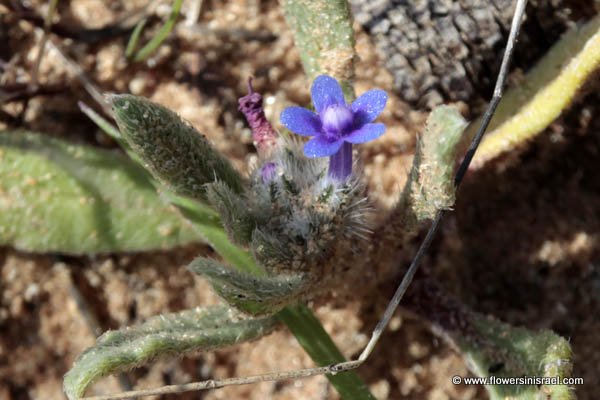
|
| Life form: | Annual | |
| Stems: | 10-40 cm; hispid, ascending, branched | |
| Leaves: | Alternate, entire | |
| Inflorescence: | Axillary and terminal cymes, more or less capitate, wth subsessile flowers | |
| Flowers: | Corolla, dark blue, violet; tube 6-8mm; limb c.5mm in diameter; stamens inserted at top of tube | |
| Fruits / pods: | Nutlets c.3x4mm, hemispherical | |
| Flowering Period: | January, February, March, April | |
| Habitat: | Sand | |
| Distribution: | Mediterranean Woodlands and Shrublands, Shrub-steppes, Deserts and extreme deserts | |
| Chorotype: | Mediterranean | |
| Summer shedding: | Ephemeral |

Derivation of the botanical name: Anchusa, αγχουσα, a plant used for cosmetic as a rouge. aggregata, to attach to, connect with; to bring together, collect, gather; meaning: clustered, joined together. Hormuzakia, named for Constantin Freiherr von Hormuzaki (Czernowitz, Ukraine). The Hebrew name: לשון-שור, lashon-shor, the leaves have raised spots with short, hooked bristles, giving the leaves a very rough feeling (like a tongue of a bull, hence the name).
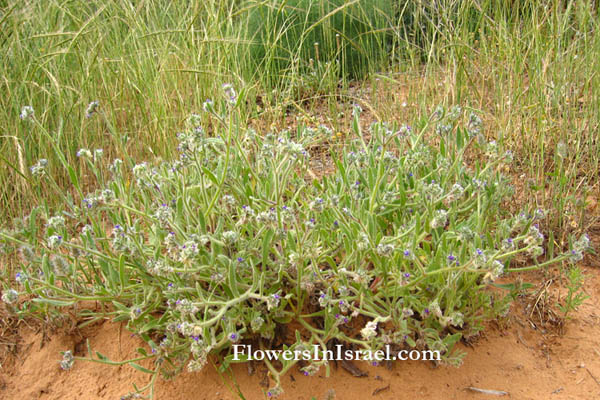
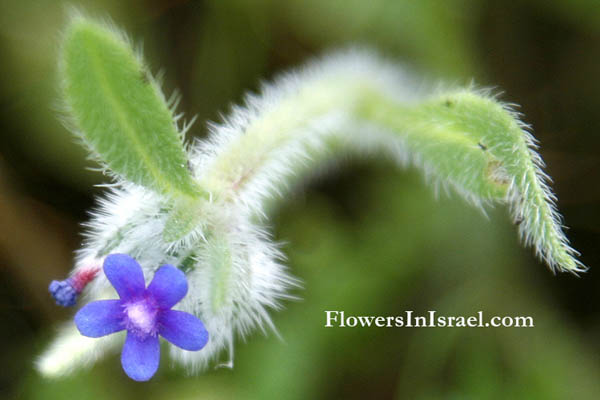
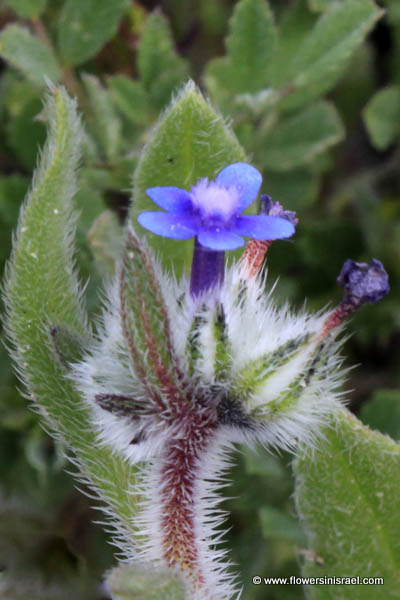
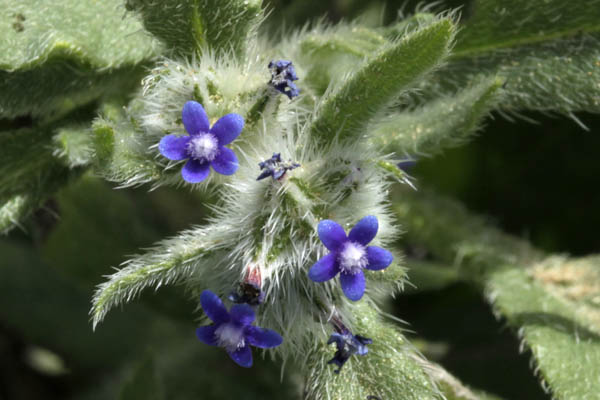
|